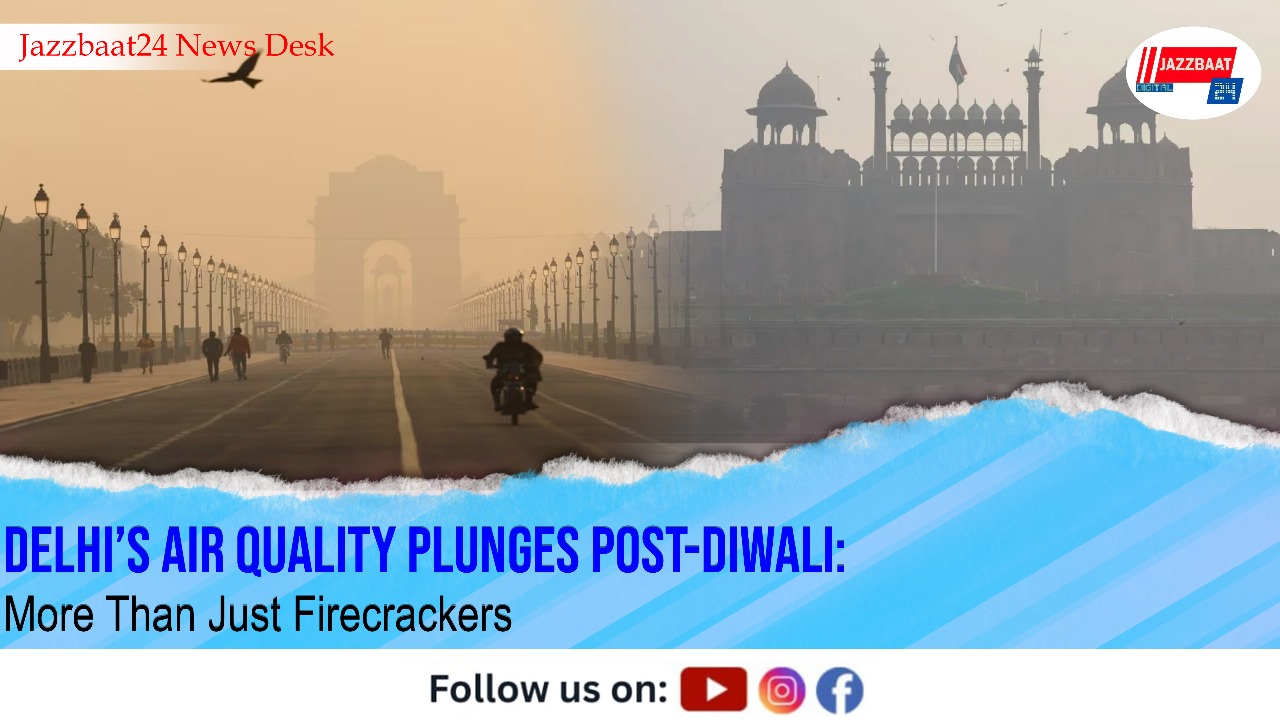
Delhi woke up on Tuesday morning under a thick, grey haze as the Air Quality Index (AQI) crossed the 400 mark in several areas, placing the city in the “severe” category. The pollution spike followed Diwali celebrations, but experts and environmental groups stress that it would be simplistic to blame the crisis solely on festive fireworks. A combination of seasonal changes, vehicle emissions, industrial pollution, and crop residue burning has collectively trapped toxic air over the capital.
While firecrackers contributed to the immediate deterioration, Delhi’s pollution levels had already been rising in the days leading up to Diwali. Low wind speed, dropping temperatures, and stagnant air have allowed pollutants to accumulate, worsening the smog. According to the Central Pollution Control Board (CPCB), nearly all of the city’s 38 monitoring stations recorded “very poor” or “severe” air quality by early Tuesday. Experts note that this recurring pattern points to systemic inaction and poor enforcement rather than one-off causes.
The Supreme Court had earlier issued strict directives to the Delhi government and pollution control authorities to implement preventive measures before air quality reached dangerous levels. Despite this, the government failed to act decisively. The Graded Response Action Plan (GRAP) was implemented late, and construction dust, vehicular emissions, and unchecked stubble burning continued unabated. The top court, in recent hearings, expressed its dissatisfaction over the lack of urgency and coordination, stating that preventive measures “must precede pollution peaks, not follow them.”
Environmental experts have repeatedly urged authorities to move beyond short-term bans and adopt long-term solutions such as stricter vehicular emission controls, cleaner industrial fuels, and incentives to curb stubble burning in neighbouring states. Public health experts have also called for better emergency responses, including health advisories and school safety measures when AQI crosses hazardous levels.
While Diwali may have added a temporary surge in pollutants, Delhi’s air crisis is a symptom of deeper policy failures. Without consistent enforcement and structural change, the city risks repeating this pattern every winter. The smog that blankets the capital today is not just a seasonal inconvenience, it is a reminder that the cost of inaction is being paid by the lungs of its citizens.